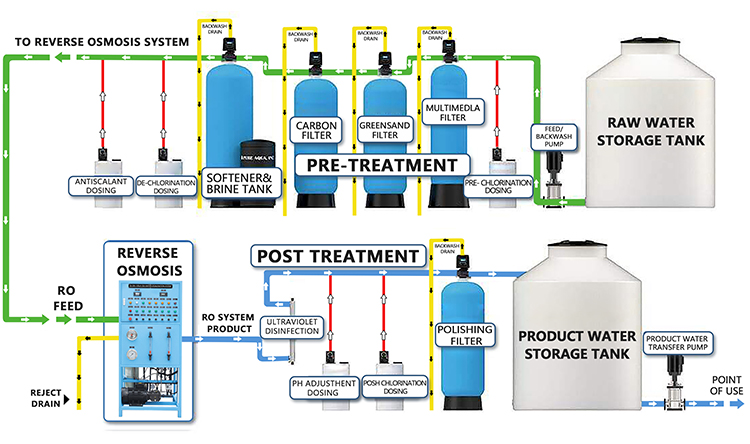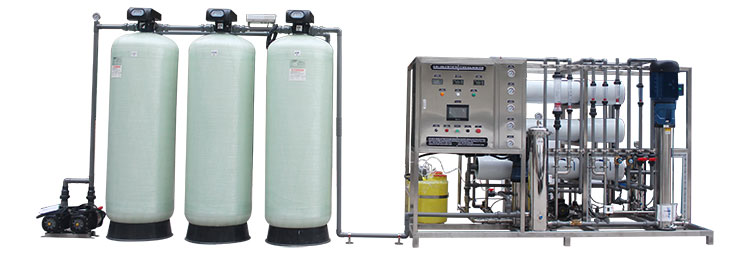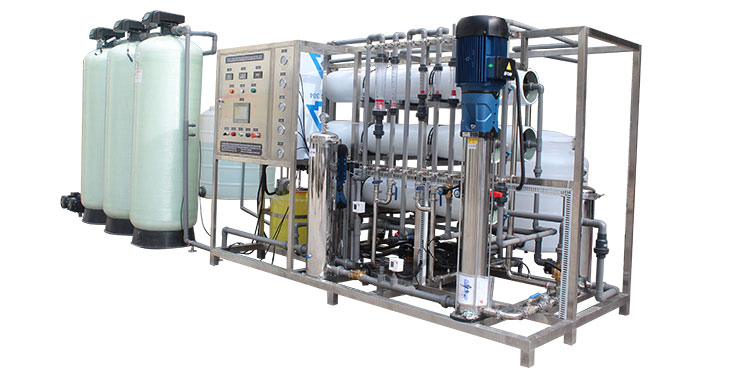What is Large Scale Water Purification?
Large scale water purification is the process of converting large amounts of raw water into safe drinking water through a series of treatment procedures. These procedures are designed to remove impurities, chemicals and pathogens from the water to ensure that the water quality meets drinking water standards. This technology plays a key role around the world, ensuring people's health and quality of life.
This article will focus on several main steps and practical applications of large scale water purification.

Large Scale Water Purification:
Large scale water purification is a technology that converts large amounts of contaminated water into clean, safe drinking water or water resources for other purposes through a series of treatment processes. This process usually involves 3 steps including sedimentation, filtration and sterilization.
3 Steps for Large Scale Water Purification:
Step 1 Precipitation:
This is the first step in the purification process. During this stage, larger particles and suspended solids in the water settle to the bottom of the water. By adding a chemical coagulant, such as bauxite, suspended solids in the water will coalesce into larger particles that are more likely to settle. The water becomes clearer after settling.
Step 2 Filtration:
After settling, the water is filtered through different types of filters. Filters can be sand, activated carbon, or other materials designed to capture the tiny impurities and particles remaining in the water. This step can significantly improve the cleanliness of the water and remove small particles that may affect water quality.
Step 3 Disinfection:
This is the final step in the decontamination process. Disinfection methods include chlorination, ozonation or ultraviolet disinfection. These methods kill bacteria, viruses and other pathogens present in the water, ensuring that the purified water meets sanitary standards.
Through these steps, large scale water purification can transform raw water into safe and clean drinking water, ensuring people's health and quality of life.

What are the practical applications of large scale water purification?
Large scale water purification has a wide range of practical applications around the world, providing reliable drinking water supplies in many areas.
In large cities and small towns, large scale water purification facilities ensure the safety and quality of water for residential and commercial use. Water purification plants purify raw water into drinking water, which is then distributed to users through the pipe network. In rural areas, water purification facilities provide farmers and villagers with clean drinking water, improving their quality of life. These facilities are often small but critical to the health of local residents. Many industrial processes require the use of large amounts of water. Large scale water purification facilities can provide qualified water sources for industry while ensuring wastewater purification and reducing environmental impact.
The tourism and hospitality industry requires large amounts of clean water to meet the needs of tourists and guests. Large scale water purification facilities can provide reliable water sources for these industries and protect the health and safety of tourists. During natural disasters or other emergencies, water sources may be contaminated or disrupted. Large scale water purification facilities can quickly provide safe drinking water and protect the lives and health of residents in disaster-stricken areas.
These practical applications demonstrate the importance of large scale water purification in ensuring people have access to safe drinking water.
What are the advantages of large scale water purification?
Large scale water purification has many significant advantages in providing clean drinking water. Large scale water purification can effectively remove impurities and pollutants in water and improve water cleanliness and safety. By killing pathogens in water through disinfection methods, large scale water purification can reduce the risk of waterborne diseases and protect people's health.
Large scale water purification makes water sources that are otherwise undrinkable available, thereby increasing water availability and alleviating water shortages. Modern water purification technology pays more and more attention to energy saving, using advanced equipment and methods in the purification process to reduce energy consumption.
Large scale water purification facilities are an important part of the public health system, providing people with healthy and safe drinking water and reducing the harm caused by water source pollution. Reliable drinking water supplies help support economic development, especially in sectors such as industry, agriculture and tourism.
Through these advantages, large scale water purification technology plays a key role in providing safe and clean drinking water to people around the world.

What are the methods for large scale water purification?
Large scale water purification uses a variety of different methods and technologies to ensure water quality standards are met.
Activated carbon filtration: This method uses the adsorption capacity of activated carbon to remove organic matter, chlorine, odor and color from the water. This is a commonly used filtering technique.
Reverse Osmosis: Reverse osmosis is an efficient water purification technology that uses pressure to move water through a semipermeable membrane, removing dissolved salts, impurities and microorganisms from the water. This method is suitable for treating water sources with high salt content.
Ultraviolet disinfection: Ultraviolet disinfection uses ultraviolet light to kill bacteria and viruses in water. It is a disinfection method without chemical pollution.
Membrane filtration: Membrane filtration technology includes methods such as microfiltration, ultrafiltration and nanofiltration. These methods remove suspended solids, bacteria, viruses and other contaminants from water through filter membranes.
Chlorine Disinfection: Chlorine disinfection is one of the most common disinfection methods. Chlorine can effectively kill bacteria and viruses in water, but the amount used needs to be controlled to avoid side effects.
Ozone disinfection: Ozone is a strong oxidant that can quickly kill microorganisms in the water and remove odors and organic matter in the water.
These purification methods can be combined and used according to different conditions of the water source to achieve the best purification effect. The application of these technologies enables large-scale water purification to be realized, providing safe and clean water sources for society.
Large scale water purification is a key technology to ensure society has access to clean and safe water sources. Through a variety of purification methods, this technology can effectively remove pollutants from water, improve public health, and promote economic development. With a deeper understanding of purification methods, we can better utilize these technologies to bring a healthier and more sustainable water environment to society.




